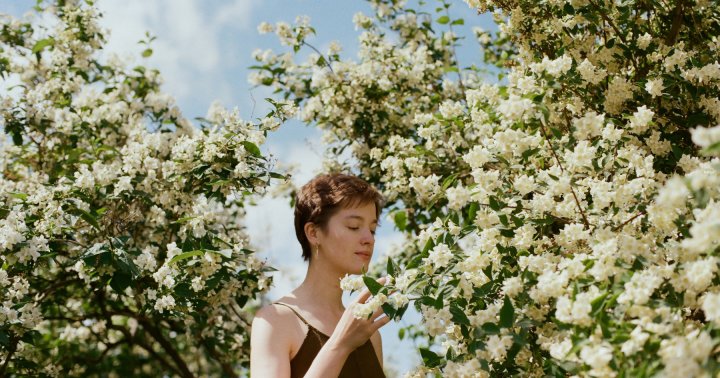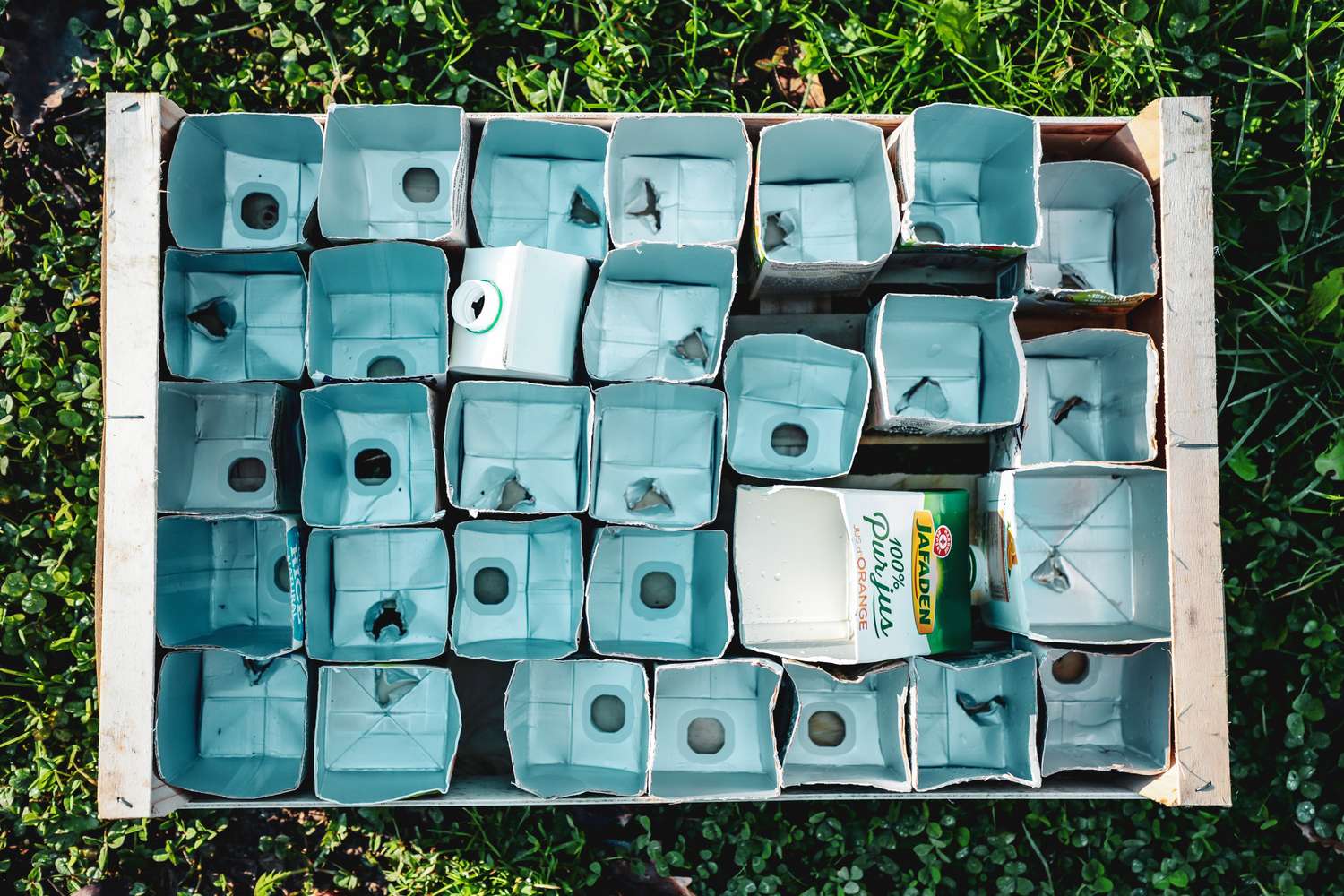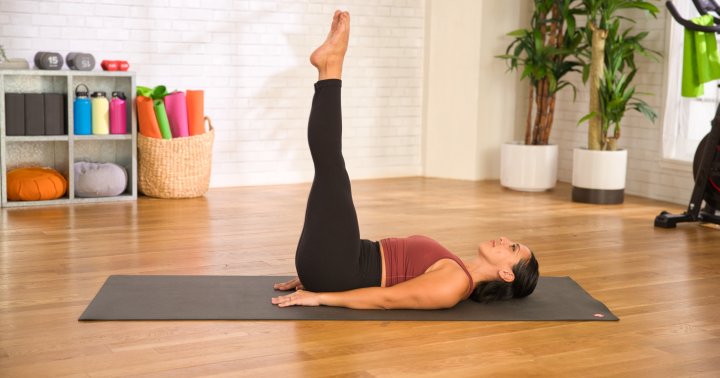Everything You Need to Know About the Heart Chakra (Anahata, the Fourth Chakra)
The post Everything You Need to Know About the Heart Chakra (Anahata, the Fourth Chakra) appeared first on The Yoga Nomads.
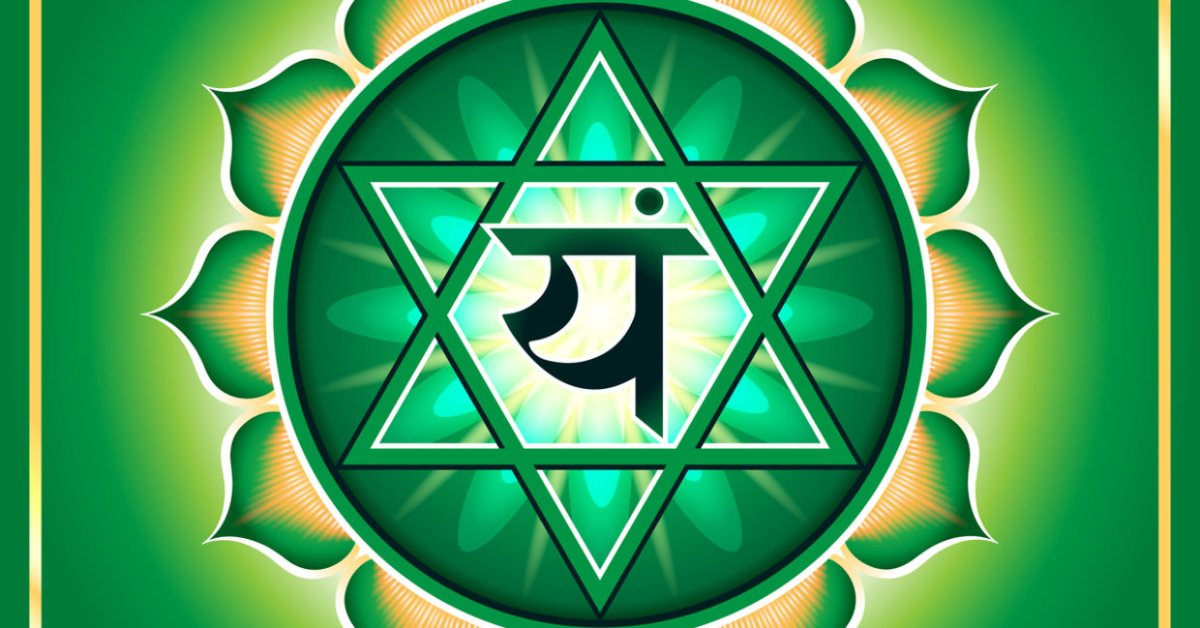
The heart (Anahata) chakra sits in the center of our chests, acting as a bridge between the upper and lower energy centers. It connects the physical realm with the spiritual, governs our relationships, and possesses healing, calming energy.
The condition of our heart chakra determines how much empathy, love, and understanding we feel towards ourselves and others. As a result, the state of our relationships reveals a great deal about the condition of this energy center. So let’s find out more about the beautiful qualities of the Anahata chakra.
The heart chakra (Anahata) at a glance
What does Anahata mean?
The Sanskrit word Anahata loosely translates to “unstruck” or “unhurt,” referring to the Vedic concept of unstruck sound, the sound of the celestial realm. The heart chakra is associated with a clear, peaceful sound, reflecting its serene energy. Some spiritual teachings state that when your Anahata energy is high, you can hear new sounds, particularly the unstruck sound of a bell or a wind instrument.
Location of the third chakra

Despite what you might imagine, the heart chakra location is not where your physical heart is, i.e., on the left side of the chest. Instead, the position is said to be in the center of the chest, in line with the physical heart. Like all of the lower five chakras, the heart chakra sits close to the spine.
Heart Chakra Element
Each one of the seven primary chakras is associated with an element. For the heart chakra, it’s air (or Vayu in Sanskrit). Air links to our breath and life force energy stored in the lungs close to the heart chakra. This element is also related to touch, emotions and expansion. Therefore, when the heart chakra is healthy, we can express our feelings, open ourselves to others, and are more receptive to touch.
Heart Chakra Color
Every chakra also has an associated color, all of which correspond with the colors of the rainbow.
The fourth chakra color (and the fourth color of the rainbow) is green, representing growth, harmony, balance, healing, and love.
Green is considered a cool, calming shade in color psychology as its frequency has short wavelengths. It symbolizes peace, nature, renewal, and health and evokes a feeling of abundance and generosity, two of the primary qualities of the heart chakra. Additionally, the color’s negative associations include jealousy and a judgemental attitude, which people with blocked heart chakras may feel.
The heart chakra also has some association with pink, the shade of love. Some pink crystals, such as rose quartz, are said to be particularly good for balancing heart chakra energy.
Anahata Chakra Symbol
Every chakra also has an associated color, all of which correspond with the colors of the rainbow.
The color of the fourth chakra (and the fourth color of the rainbow) is green, representing growth, harmony, balance, healing, and love.
Green is considered a cool, calming shade in color psychology as its frequency has short wavelengths. It symbolizes peace, nature, renewal, and health and evokes a feeling of abundance and generosity, two of the primary qualities of the heart chakra. Additionally, the color’s negative associations include jealousy and a judgemental attitude, which people with blocked heart chakras may feel.
The heart chakra also has some association with pink, the shade of love. Some pink crystals, such as rose quartz, are said to be particularly good for balancing heart chakra energy.
What role the Fourth chakra plays in our lives
The heart chakra is the energy center that allows us to give and receive love, playing an essential role in our happiness and wellbeing. Yogic tradition teaches that the condition of our fourth chakra will determine the relationships we have with ourselves and others.
It governs not just romantic love but love between family, friends, strangers, and all living things. It is believed that the stronger the heart chakra, the more love, compassion, and empathy a person can feel and the more gratitude and joy they will experience. Because the heart chakra is also associated with peace, it suggests that you will gain harmony if you love and accept yourself.
What the Heart chakra controls
Each chakra is associated with specific organs or systems in the body. The heart chakra energetically connects to the thymus gland, lungs, shoulders, upper back, heart, and circulatory system. The heart chakra also has a connection to the sense of touch, so it can also control the health and condition of the skin and hands.
Thus, when the fourth chakra is out of balance, physical problems may arise in any of these areas. In contrast, these body parts are healthy when heart chakra energy is high.
Anahata chakra psychological meanings
Spiritual teachings suggest that a person with a balanced heart chakra will possess the positive qualities of patience, gratitude, compassion, understanding, and empathy. They can look beyond a person’s shortcomings and see the beauty in their soul. As a result, they find it easier to accept and forgive people and do not hold grudges.
However, this doesn’t mean someone with a strong heart chakra allows other people to mistreat them or walk over them. A balanced heart chakra equals balanced emotions. Their emotions do not rule them; thus, they can see things clearly but choose love over hate and peace over war.
Heart chakra frequency
Whether you can see it physically or not, every form of energy has a vibration. Although there is no scientific evidence to prove it, the ancient yogis believed that each chakra has a unique frequency that corresponds with its associated chakra.
They say that the heart chakra frequency is 639 Hzm, known as the frequency of love and healing. In comparison to the vibrations of the other chakras, the chakras below the Anahata all have lower frequencies, and the chakras above have higher ones. This is because the lower chakras relate to the physical world; thus, their wavelengths are denser than the upper chakras that relate to the spiritual realm.
Signs and symptoms your Heart chakra is out of balance
Your heart chakra can be either balanced, underactive, or overactive. We’ve discussed the qualities of a balanced heart chakra, but how can you tell if yours is under or overactive? Symptoms of an underactive heart chakra include:
ShynessInability to trust othersFailure to open up to othersLack of self-lovePossessiveness and jealousy in relationshipsA judgemental attitudeFeelings of lonelinessTendency to be antisocialFeeling disconnected from othersSymptoms of an overactive heart chakra include:
Being overly empathic Putting yourself before others all the timeSacrificing your needs to please othersInability to set boundaries in relationshipsCodependencyIn addition, if your heart chakra is unbalanced, you may notice the following physical signs:
Chronic upper back painCirculation problemsAsthma or breathing difficultyImmune system deficiencyHow to heal, open and balance the Heart chakra
If you believe your heart chakra is blocked or overactive, you’ll be pleased to know there are many things you can try to release the stuck energy and strengthen the fourth chakra. Unfortunately, there is no scientific evidence to prove that any of the following suggestions work, but if you’re open-minded, there’s no harm in giving them a go.
Healing visualization
A popular way to work on a chakra is through visualization, which people typically do as a meditative practice. However, once you know the specific visualization, you can do it at any time and for any length.
This heart chakra healing visualization combines two visualizations. First, it guides you to visualize yourself as air, the heart chakra element, and then imagine a green energy sphere in the center of your chest.
Specific foods

As yoga has roots in the Indian holistic practice of Ayurveda, yogis eat specific foods to help balance chakras. For example, leafy green vegetables like kale, brussels sprouts, and spinach may benefit the heart chakra as they hold the same color vibration and earthy energy as the third chakra. In addition, you can add green fruits to your diet, make a nourishing green soup or smoothie, or sip green tea.
However, when consuming foods for a specific chakra, take a moment to think about your intention just before eating it. Then continue to focus on this as you slowly chew and swallow the food.
Affirmations and meditation

Affirmations are widely used for personal and spiritual development and can be an effective way to cultivate positive qualities and release negative emotions and beliefs. Here are some common ones for the heart chakra.
I joyfully give and receive loveI feel compassion for myself and othersI am full of gratitude for the love in my lifeMy heart is full of unconditional love for all beingsI choose kindness and love over judgment and hateI am worthy of receiving love I unconditionally love and accept myselfI willingly accept and embrace love from othersI release and let go of all resentmentI forgive myself and othersYou can write your favorite affirmations on your mirror or post-it notes and place them around the home. Alternatively, you can flood your consciousness with these words through a recording like this five-minute heart chakra affirmation meditation.
Yoga poses

As the chakra system is part of the ancient yogic tradition, it makes sense that asana (yoga poses) may help balance and open chakras. Typically, yoga postures and movements that expand and stimulate the chest and heart center may benefit fourth chakra healing. These include:
Sphinx pose (Salamba Bhujangasana)Cobra (Bhujangasana)Dancer’s Pose (Natarajasana)Crescent lunge (Anjaneyasana)Puppy/melting heart pose (Uttana Shishosana)Camel (Ustrasana)Upward facing dog (Urdhva Mukha Svanasana)Bridge (Setu Bandha Sarvangasana)Wheel pose (Urdhva Dhanurasana)In addition to heart-opening postures, some stretches that compress the chest area, like Eagle arms, can be helpful.
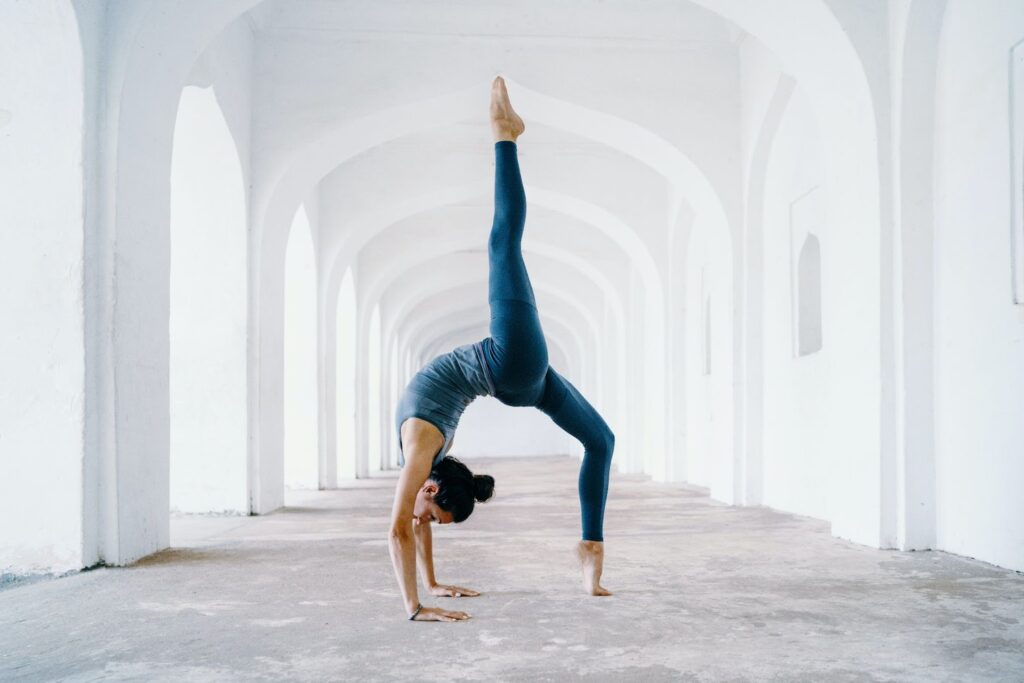
Mudras
A mudra is a symbolic hand gesture used in yoga and other ancient spiritual practices. Each chakra has one or more mudras associated with it, and it’s believed that holding these hand gestures during meditation will bring further activation to that energy center.
There are a few mudras you can practice for heart chakra opening. One is called the Hridaya Mudra, and practicing it is said to help you release and balance your emotions and ease any heartache. If you’re going through a challenging time and feel your heart closing up as a protective mechanism, practice the Hridaya Mudra to keep the heart chakra strong.
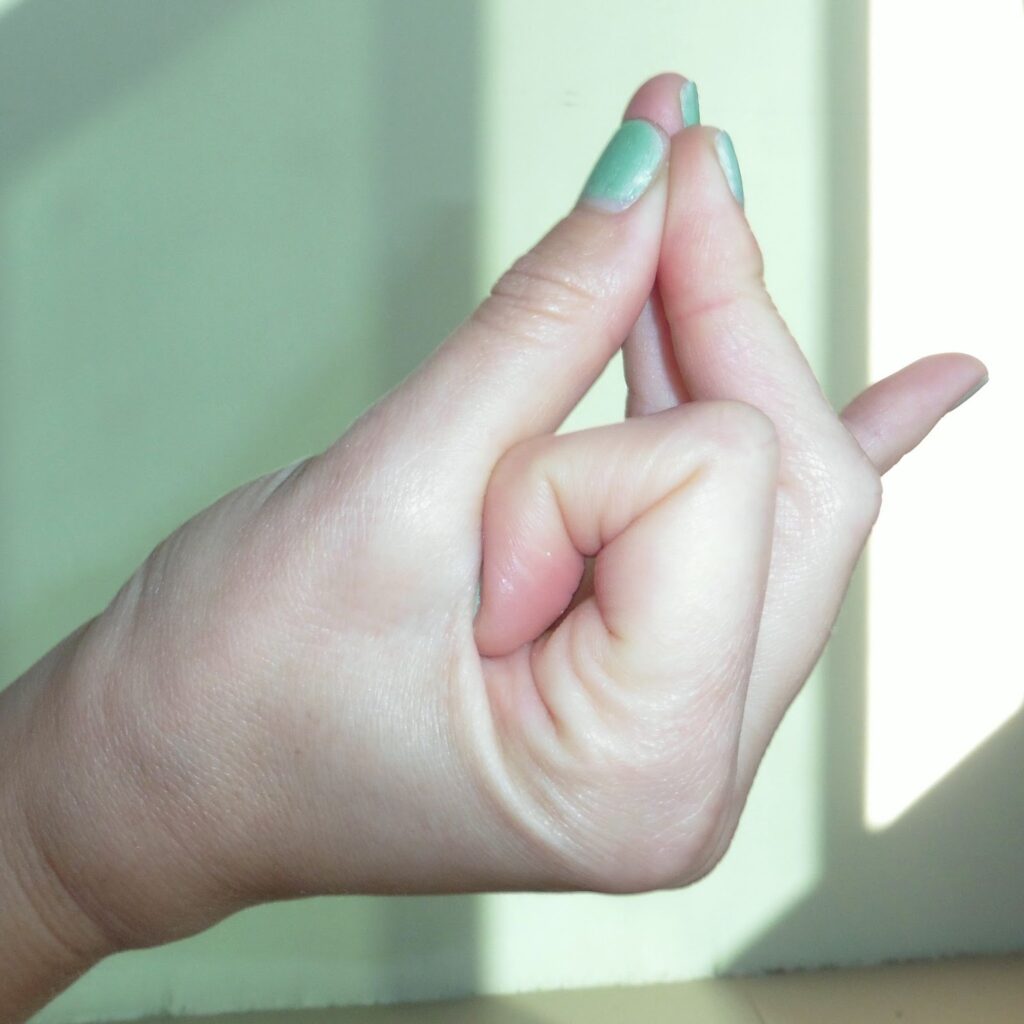
To practice the Hridaya Mudra, tuck your index finger into the root of your thumb, connect your thumb tip with the middle and ring fingertips, and point your pinky finger outwards.
Another mudra you can try is the Padma Mudra (Lotus Mudra) which promotes unconditional love to all beings. The soul-nurturing hand gesture can open your heart and purify any negative emotional energy there. It can also bring you peace when you feel lonely and isolated.
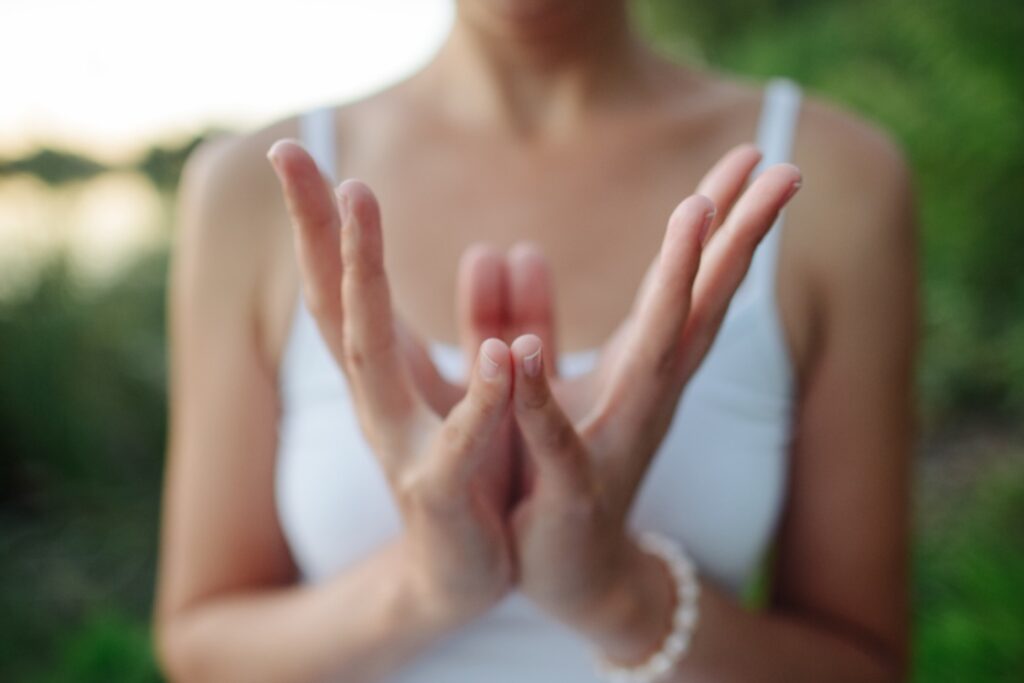
To practice the Padma Mudra, bring your palms to meet, connecting the base of the wrists, the pinky finger side, and the thumb side. Next, open and spread your index, middle, and ring fingers like a blooming lotus flower. You can hold this mudra close to your heart center as you focus on the energy there.
Heart chakra stones and crystals
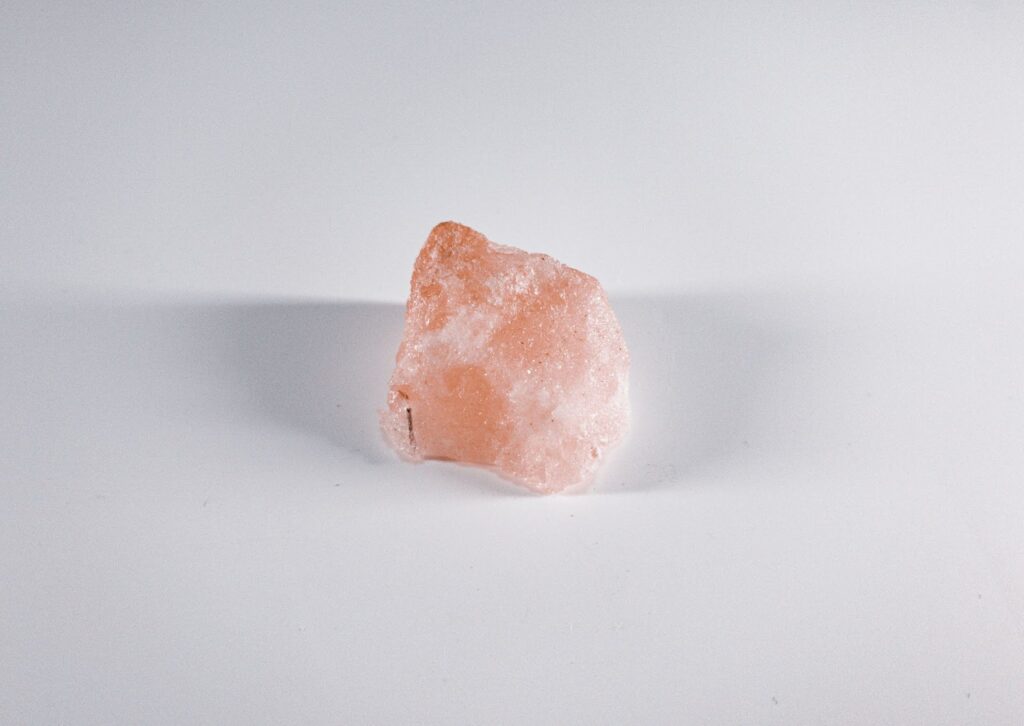
Crystals and stones can be a powerful way of opening chakras and releasing blockages. For example, working with green and pink crystals can benefit the heart chakra. Considering the location of the fourth chakra, a compelling way to work on opening the heart chakra with a crystal is to wear it around your neck as a pendant.
You can also keep the stones next to your bed. Alternatively, you can use them in a Reiki session or meditate while holding them. Here are the best stones and crystals to use for heart chakra healing.
Rose Quartz: This is one of the best crystals to work with for a blocked heart chakra from emotional trauma, such as a breakup or divorce. It has very soothing energy and promotes self-love, helping you to nurture yourself during difficult times. Aventurine – If you feel like your heart is closed off because you are stuck in your head, this green stone will direct your energy towards your heart chakra. It will also give you a boost of positivity and help you find inner peace.Rhodochrosite: This is another pink stone that will assist with heartache. It can help you control your emotions and raise your self-esteem to heal old emotional wounds and open your heart chakra.Malachite – Releases tensions in the heart and promotes acceptance and forgiveness, helping you to let go of past hurts and move forward.Jade – This dark green stone has intense energy around prosperity and abundance and is known for attracting love.FAQ
What does the Anahata chakra do?
The Anahata chakra determines how you relate to yourself and others. By strengthening your heart chakra, you may feel more empathy and compassion towards others, find more love for yourself, and experience healthier and happier relationships. The Anahata chakra also promotes gratitude and inner peace, improving your overall happiness.
What happens when the Heart chakra is blocked?
If your heart chakra is blocked, you’ll struggle to trust and open up to others and will subconsciously withdraw from people. Over time, this will result in feelings of loneliness and disconnection. In addition, the longer the heart chakra stays blocked, the harder it will become to trust and accept others into your life.
How do you unblock the Anahata chakra?
There are various things you can try to unblock your heart chakra. People usually find one or two ways that work best for them, so I recommend trying multiple things. Start with keeping a gratitude journal, practicing metta meditation, reading affirmations aloud, and wearing rose quartz around your neck.
What blocks the Heart chakra?
Matters of the heart are the leading cause of the heart chakra becoming blocked. For example, breakups, breakdowns in the family unit, or multiple negative interactions can trigger you to self-block your heart chakra as you attempt to protect yourself from emotional pain.

 MikeTyes
MikeTyes 








